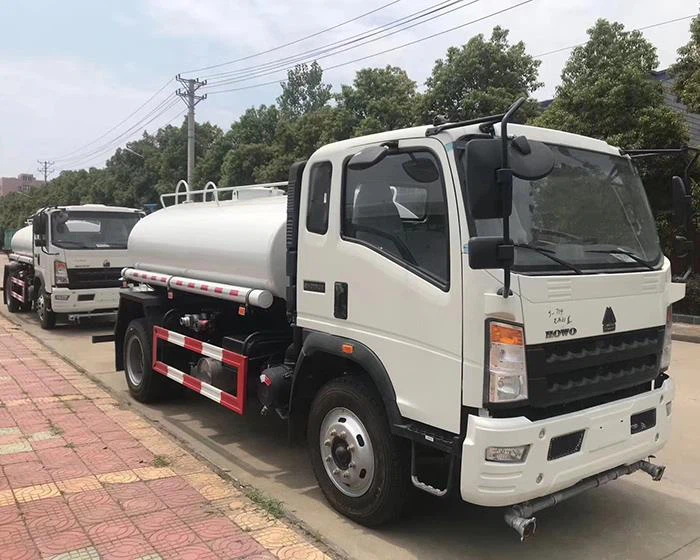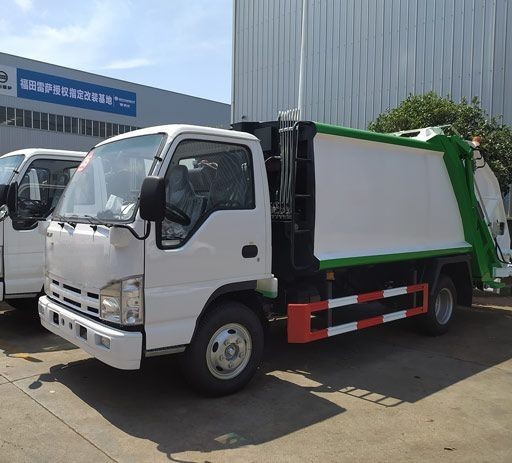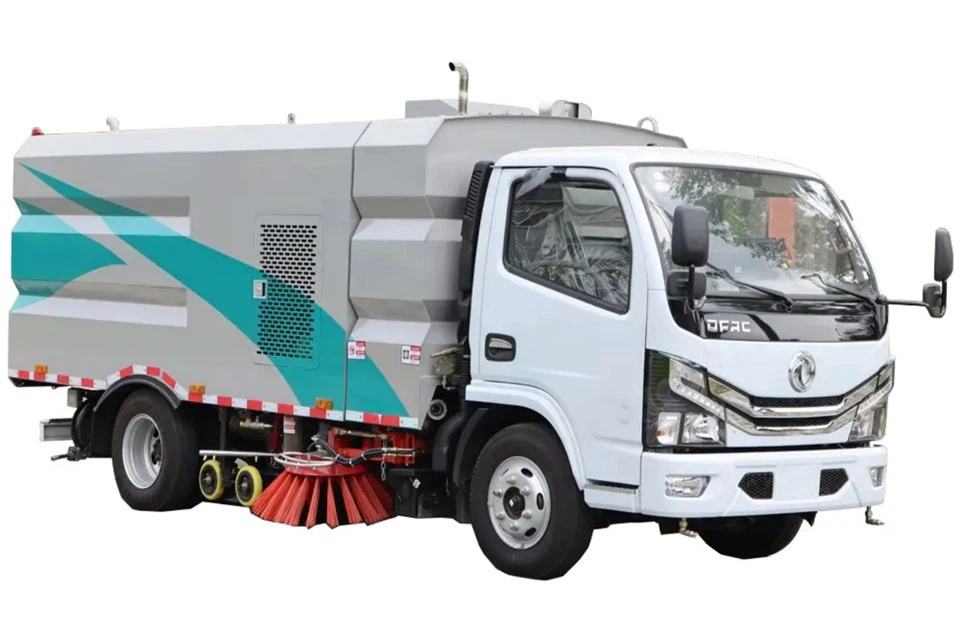Discovering the New Way Truck: Revolutionizing Transportation

The trucking industry is undergoing a remarkable transformation, driven by innovations that promise to reshape logistics, freight transport, and the very concept of how goods move from one place to another. One of the key developments in this field is the emergence of the New Way Truck. This comprehensive article will explore what the New Way Truck is, the technology behind it, its many benefits, and how it is changing the landscape of commercial transport. With practical tips, examples, and a FAQ section, you will come to understand why this innovative truck is paving the way for a more efficient future.
Understanding the New Way Truck Concept
The New Way Truck is not just about a single vehicle; it’s a paradigm shift in the logistics industry. This section explains the core elements that constitute the New Way Truck concept.
1. Definition and Purpose
The New Way Truck refers to advanced transportation solutions that integrate modern technology for enhanced efficiency, safety, and sustainability. Its primary purpose is to optimize the logistics and freight transport process while reducing environmental impact.
2. Key Features of the New Way Truck
- Electric or hybrid engines for reduced emissions
- Advanced GPS and navigation systems for efficient routing
- Telematics for real-time monitoring of vehicle health and load
- Autonomous driving capabilities
- Safety enhancements combining AI with traditional safety features
The Technological Innovations Behind the New Way Truck
Technological advancements are at the heart of the New Way Truck initiative. In this section, we will delve deeper into the technologies that enable these vehicles to be more efficient and effective.
1. Electric and Hybrid Powertrains
Electric and hybrid trucks are becoming increasingly common as manufacturers seek to meet stricter environmental regulations. The advantages include:
- Lower fuel costs
- Reduced emissions
- Less noise pollution, ideal for urban areas
2. Advanced Navigation and Routing Systems
Cutting-edge GPS technologies and software allow trucks to navigate routes that save both time and fuel:
- Real-time traffic updates
- Route optimization based on load and destination
3. Telematics and Fleet Management
Telematics is a system that combines telecommunications, vehicular technologies, and GPS. This technology provides fleet managers with real-time data on vehicle performance, leading to better decision-making.
| Telematics Benefits | Impact |
|---|---|
| Improved fuel efficiency | Lower operational costs |
| Driver behavior analysis | Enhanced safety |
| Maintenance notifications | Reduced downtime |
Benefits of the New Way Truck
The New Way Truck approach offers numerous benefits to businesses, drivers, and the environment. Below we outline these key advantages.
1. Cost Efficiency
Adopting new technologies generally leads to significant cost savings in fuel, maintenance, and operational efficiency. For instance, a fleet that switches to electric vehicles can lower its fuel costs by up to 60%.
2. Enhanced Safety
With advanced safety features such as collision avoidance systems and automated braking, the New Way Truck can significantly reduce the incidence of accidents on the road, ensuring the safety of drivers and the public.
3. Environmental Benefits
Electric and hybrid trucks contribute to reducing greenhouse gas emissions, helping businesses to meet sustainability goals while also appealing to environmentally-conscious consumers.
4. Flexibility and Scalability
The customizable nature of new trucking technologies allows businesses to scale operations up or down based on demand, making logistics more responsive and efficient.
Practical Applications of the New Way Truck

The New Way Truck isn’t just an abstract concept: it has practical applications across various sectors. This section outlines examples of how different industries are leveraging this innovative approach.
1. E-commerce and Delivery Services
With the rise of e-commerce, companies like Amazon are increasingly turning to new trucking solutions for last-mile delivery. Electric vehicles facilitate quicker deliveries while upholding environmental standards.
2. Construction and Heavy-Duty Transport
Companies in the construction industry are using hybrid trucks that offer both high-power performance and enhanced fuel efficiency, allowing them to transport materials effectively while minimizing costs.
3. Food and Beverage Industry
For food transporters, the New Way Trucks equipped with temperature control can ensure products remain fresh, reducing waste and ensuring compliance with health regulations.
Challenges in Adopting the New Way Truck
1. Infrastructure Limitations
The lack of adequate charging stations for electric trucks hinders their adoption. Expanding public and private infrastructure is essential for supporting electric vehicle fleets.
2. Initial Costs
The initial investment in advanced trucks can be significant. However, the long-term savings often outweigh these upfront costs. Financing options such as leasing can ease this burden.
3. Training and Adaptation
Companies must invest in training operators and maintenance personnel to handle new technologies effectively. Providing comprehensive training programs will facilitate smoother transitions.
Future of the New Way Truck
The future looks bright for the New Way Truck. As technology continues to advance, we can expect several trends to unfold.
1. Increased Automation
Self-driving trucking technology is evolving and could revolutionize the industry. Companies are investing in research to create fully autonomous vehicles capable of handling complex routes and delivering goods safely.
2. Greater Connectivity and Integration
As vehicles become more connected, the integration of IoT (Internet of Things) technology with trucks will streamline operations and improve performance.
3. Environmental Innovations

Continued innovations in battery technology and alternative fuels will further enhance the sustainability of transportation, pushing the industry closer to an eco-friendly future.
Practical Tips for Businesses Adopting the New Way Truck
For businesses considering the transition to the New Way Truck approach, here are some practical tips to ensure successful integration:
1. Conduct a Thorough Cost-Benefit Analysis
Analyze the potential savings in fuel and maintenance against the initial costs. Use data to present a compelling case for adopting new truck technologies.
2. Start with a Pilot Program
Begin with a small fleet of New Way Trucks to assess their effectiveness and address any operational challenges before wider adoption.
3. Collaborate with Technology Providers
Work hand-in-hand with truck manufacturers and technology providers to gain insights and support throughout the transition process.
4. Provide Training for Staff
Ensure that all employees involved in vehicle operation and maintenance receive training on the new technologies to maximize their benefits.

Frequently Asked Questions (FAQ)
1. What is a New Way Truck?
The New Way Truck refers to advanced transportation solutions that utilize modern technology for improved efficiency, safety, and sustainability in logistics and freight transport.
2. How does the New Way Truck improve safety?
New Way Trucks incorporate features like collision avoidance systems and automated braking, significantly reducing accident risks on the road.
3. Are New Way Trucks cost-effective?
While the initial investment may be high, the long-term savings in fuel and maintenance costs typically result in overall financial benefits.
4. What industries can benefit from the New Way Truck?
Various sectors including e-commerce, construction, and food delivery can leverage New Way Trucks to improve efficiency and meet sustainability goals.
5. What are the main challenges in adopting New Way Trucks?
Infrastructure limitations, initial costs, and the need for driver training pose challenges that businesses must address when transitioning to New Way Trucks.
6. What does the future hold for New Way Trucks?
Future trends include increasing automation, greater connectivity, and advancements in environmental technologies, all aimed at enhancing the trucking industry.
